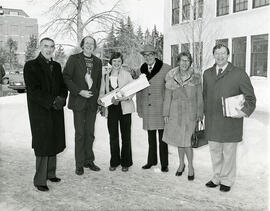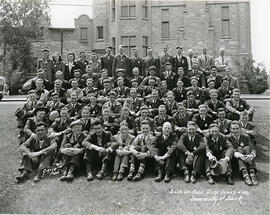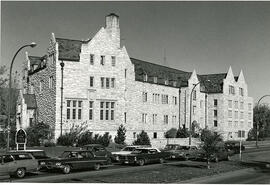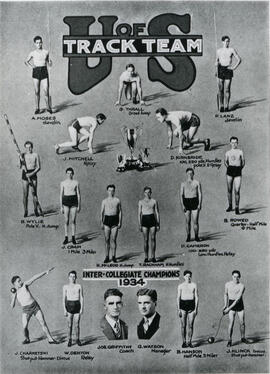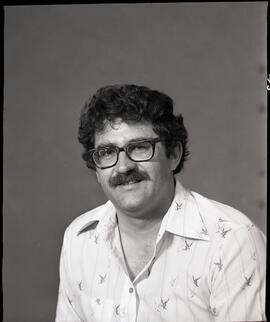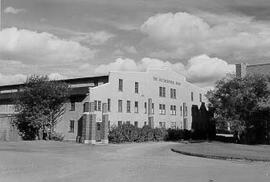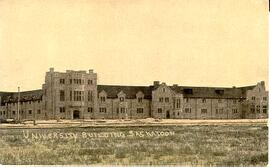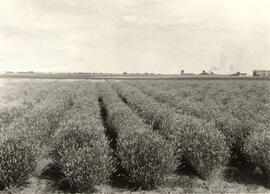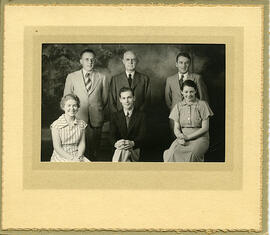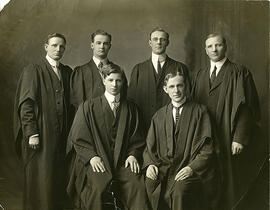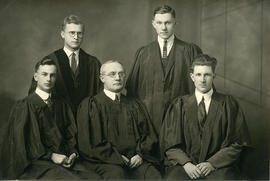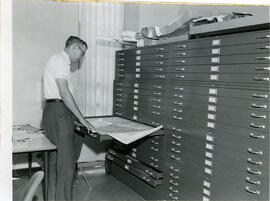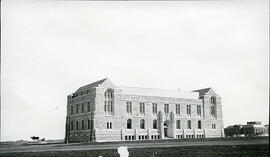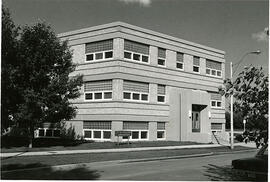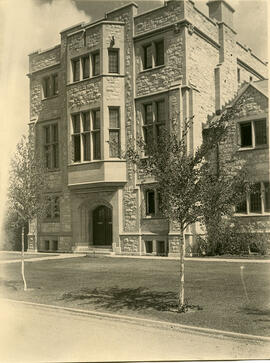Joanne McTaggart - Presentation
- A-5340
- Item
- March 1975
Joanne McTaggart, second-year Physical Education student and Huskie track and field sprinter, presented with flowers after breaking the world indoor record for the women's 300 meters at a CWUAA (CIS) meet in Edmonton, Alberta. At far left is R.W. Begg, University President; second from left is Lyle Sanderson, Huskie track and field coach. Winter scene; taken in front of Physical Education Building.
Bio/Historical Note: Joanne McTaggart, indisputably one of Canada’s premier runners of the 1970s, was born in Regina in 1954. She moved to Saskatoon for Grade XI and graduated from Walter Murray Collegiate, where she once won five events at the school meet. McTaggart also started to compete on behalf of the Saskatoon Track and Field Club. She was named to Canada’s national track team in 1972 while in Grade XI. She qualified for the relay team at the 1972 Munich Olympics but Canada didn't send a team. McTaggart enrolled at University of Saskatchewan (B.Ed. 1977) in 1974. In her rookie year with the Huskies, she won conference championships in the 40 yards and 300 metres. That same year she was Western Canadian Junior Champion in the 50 and 200 metres and the Canadian senior indoor 200 champion. McTaggart won 10 conference titles in her four years with the Huskies, highlighted by a world record performance of 38.2 seconds in the 300 metres at the 1975 indoor CWUAA (CIS) meet in Edmonton, Alberta. McTaggart qualified for the Canadian team at the 1975 Pan-American Games, won a bronze medal in the 4x100-metre relay and half an hour later, was invited to run the 4x400-metre relay where Canada held off the Americans and the Cubans to win the gold medal. At the 1976 Montreal Olympics, Joanne competed in the 200 metres and finished fourth in the 4X100-metre relay. McTaggart was inducted into the University of Saskatchewan Athletic Wall of Fame in 1984; the Saskatoon Sports Hall of Fame in 1994, and the Saskatchewan Sports Hall of Fame and Museum in 1996.

